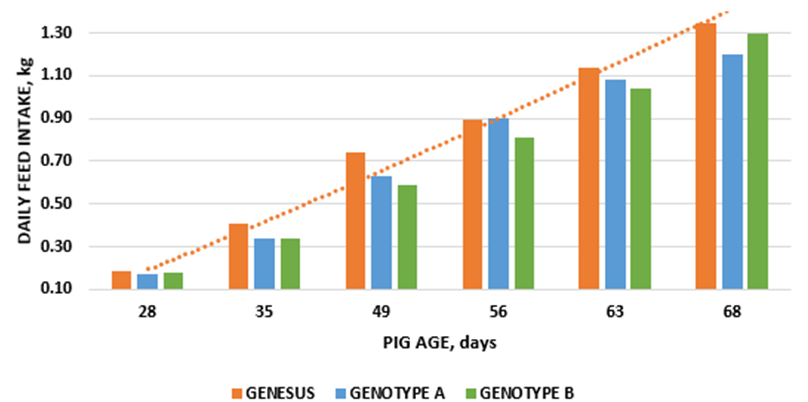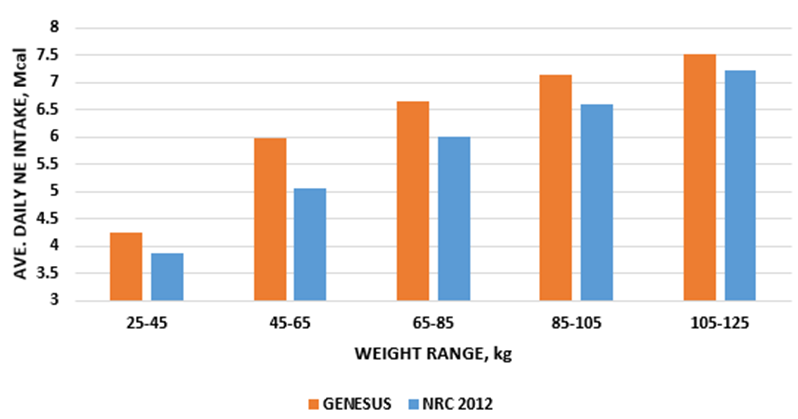



Genesus Global Technical Report: Dietary energy considerations for Genesus full program pigs part 1 - daily feed intake potential
Energy is the most expensive component of a pig's diets, comprising about 50 percent of the final diet cost. It is one of the main nutrients required for lean tissue, fat, and bone growth; it supports the daily maintenance requirements to maintain body weight and function and is used to enable physical activities such as walking.Feed grains such as corn, barley, and wheat provide most of the energy in typical pig diets, with protein ingredients such as soybean and canola meal contributing to only 10-15 percent of the total energy content.
The most accurate measure of the amount of feed energy ultimately available to the pig for tissue growth, fetal development, milk production, and maintenance is termed net energy (NE). Typical swine diets contain anywhere between 2100-2700 kcal of net energy per kilogram. Most nutritionists now use the net energy system when formulating pig diets and most of the ingredients commonly used in swine diets have reliable net energy values.
Pigs of various genotypes differ in their capacity to consume feed. One of the main reasons for such differences is the selection goals of the genetic program and the degree of emphasis placed on feed intake and other related traits. Genesus has historically emphasized growth rate and feed intake in their selection program and these two parameters currently contribute over 50 percent of the final value of the Genesus sire line index.
Figures 1 and 2 below compare feed intake guidelines for Genesus full program nursery pigs and grow-finish pigs to guidelines published by other commonly used genotypes. It is important to note that all feed intake guidelines are actually a measurement of feed disappearance, and are normally assumed to be 105 percent of actual intake. These comparisons show that Genesus market pigs have the capability to consume 5-10 percent more daily feed than most other genotypes commonly used in the industry today. The higher daily feed intakes of Genesus pigs translate to greater daily energy intakes compared to commonly used benchmarks in the industry.


Figure 3 compares the daily net energy intake of Genesus pigs (barrows and gilts mixed) to those typically expected in North American commercial production, as suggested by NRC, Nutrient Requirements of Swine, 2012. (National Research Council 2012, Nutrient Requirements of Swine, The National Academies Press, Washington, D.C.)

An accurate picture of feed and energy intake is an essential piece of information for nutritionists who are setting diet specifications and energy levels. Without specific information, industry averages or standards are often used, resulting in inappropriate specifications being applied. For more information on specifications for feeding the Genesus pig, please contact your nutritionist or consult the Genesus website for a complete copy of our Genesus Feeding Guidelines.









